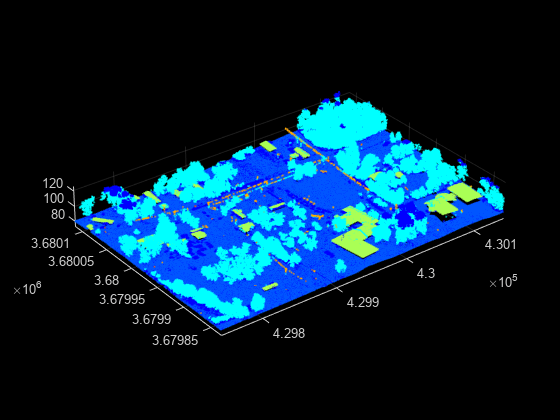readPointCloud
Read point cloud data from LAS or LAZ file
Syntax
Description
[
additionally returns a ptCloud,ptAttributes] = readPointCloud(lasReader)lidarPointAttributes object, ptAttributes, which contains
all available point attributes in the input LAS or LAZ file. (since R2025a)
[___] = readPointCloud(___,
specifies options using one or more name-value pair arguments in addition to any of the
argument combinations in previous syntaxes. For example,
Name,Value)"ROI",[5 10 5 10 5 10] sets the region of interest
(ROI) in which the function reads the point cloud.

